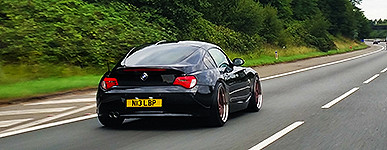So I have an evo x currently on stance ss+ coilovers and recently have been looking into bag over coil setups using my stance dampers.
My main concern is I dont want to kill the performance handeling of my evo by switching over to bags, but my understanding is that depending on the psi you run in the bags it effectively creates a spring rate. So theoretically I could create a 10k 8k spring rate setup correct?
Are they any downsides to this style of setup both for performance and lowering wise?
I believe the accuair s4 runs this style setup which was what made me look into this.
Any thoughts or things im overlooking would be greatly appreciated, thank you!
My main concern is I dont want to kill the performance handeling of my evo by switching over to bags, but my understanding is that depending on the psi you run in the bags it effectively creates a spring rate. So theoretically I could create a 10k 8k spring rate setup correct?
Are they any downsides to this style of setup both for performance and lowering wise?
I believe the accuair s4 runs this style setup which was what made me look into this.
Any thoughts or things im overlooking would be greatly appreciated, thank you!









Comment